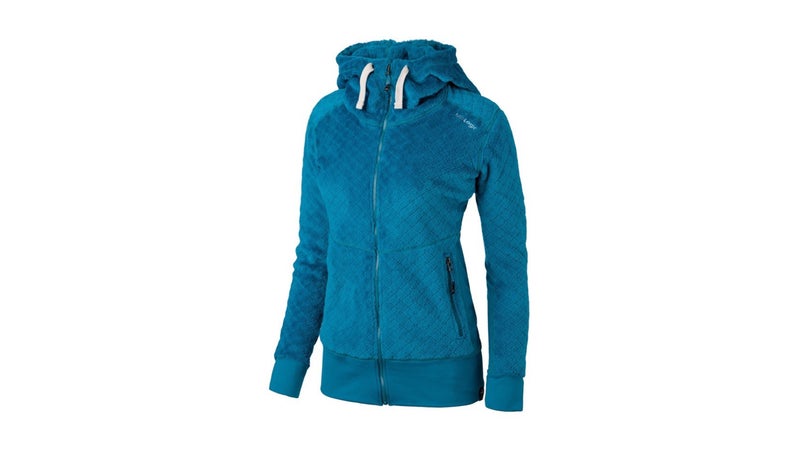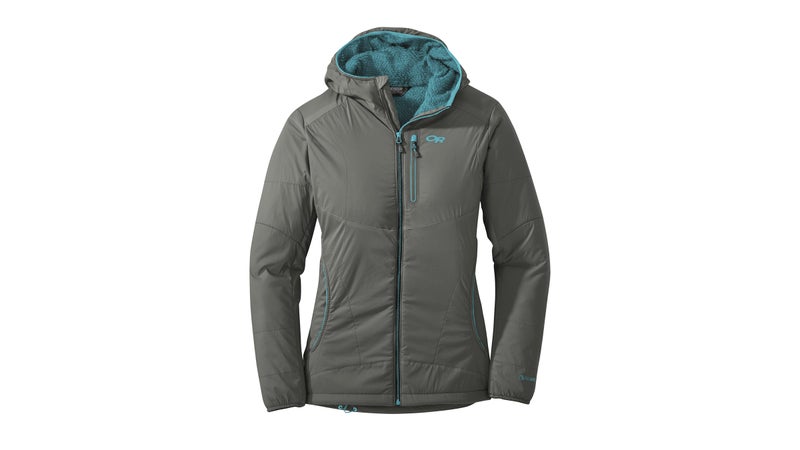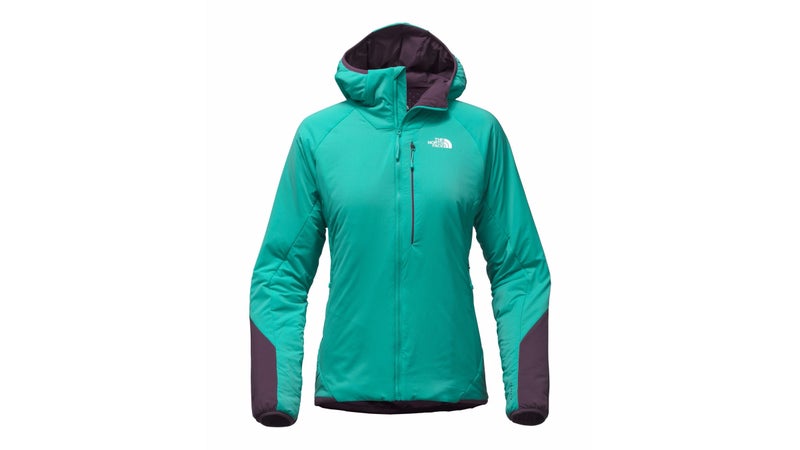Making a warm jacket isn’t hard. But making a warm jacket that’s also breathable enough to wear while you’re exercising—that’s much trickier. Lately, though, companies have been pouring significant R&D into the “active insulation” category, and they've come up with some impressive results.
Patagonia got the party started with the ($249), which is still a fine option: it’s stretchy, breathable, and terrifically warm, and it’s become my ski-season workhorse. But this year, I’ve seen an increase in the number of great midweight jackets and hoodies from other brands that pump out sweat during cool-weather sports.
Here are the best new options for women.
Warm

MtnLogic Cozy Hoody ($179)
proved to be the perfect layer for cool-weather backpacking. The wide, stretchy band of Polartec Power Stretch Pro around the hem kept the top in place while hiking, and because it’s smooth and uncluttered, it feels particularly comfy beneath a pack's hip belt.
There’s no insulation under the arms—just more Power Stretch Pro. Everywhere else, there’s Polartec High Loft fleece, which is warm (because of the pile) but breathable (the weave is so open, you can actually see light shining through the material’s pores). Waking up at 10,000 feet one chilly fall morning when I was backpacking in Colorado’s Park Range, I pulled this hoody on while breaking down camp and appreciated the cozy hood and high collar. Then I kept it on for the following climb, and never overheated.
I pair it with a hard shell in windy conditions, because gusts cut right through the fabric. But for calm, cold days, its breathability and warmth can’t be beat.
Warmer

Outdoor Research �´dz����’s Ascendant Hoody ($215)
uses a stretchy Pertex Microlight 20D ripstop outer layer to repel wind and water. Inside, the jacket is lined with Polartec Alpha Direct, which looks like shag carpet and, like the High Loft fleece above, uses a big, open weave to vent sweat. It’s warmer than you’d think, given how thin the pile is. I like it for hiking and biking in sub-40-degree temperatures. Above that, I find it too warm for anything but lounging in camp.
Outdoor Research kept the Alpha Direct insulation out of the upper arms to increase the top's breathability. This gives the jacket an edge over the similarly cut ($200), which I found bound a bit through the arms and shoulders when the fleece clung to my base layers. On the Ascendant, fabrics slide freely. For ski touring in mild weather, this is a do-it-all package that buffers wind-chill and provides breathable warmth.
Warmest

The North Face �´dz����’s Ventrix Hoodie ($220)
Backcountry skiers want jackets that are cool when you’re moving and warm when you’ve stopped. This achieves that trick with temperature-sensitive pores that expand when you’re running hot and constrict when you’re cool—and, I kid you not, they actually work. While I haven’t yet tested the Ventrix on snow, I mountain biked in it one frost-crispened, 25-degree morning, and didn't once feel stifled, even during hard efforts.
It’s stuffed with the North Face’s proprietary synthetic insulation, which initially felt too warm for exercise. But once I started moving, it was neat to see how the perforations (in the jacket’s lining across the upper back, and in the exterior shell under the arms) did grow bigger than their one-millimeter size at room temperature. Plus, the hood is nicely sculpted to stay on in windy conditions, with face-hugging elastic panels on the sides. And the fit is great—flattering, body-hugging, yet not restrictive.


